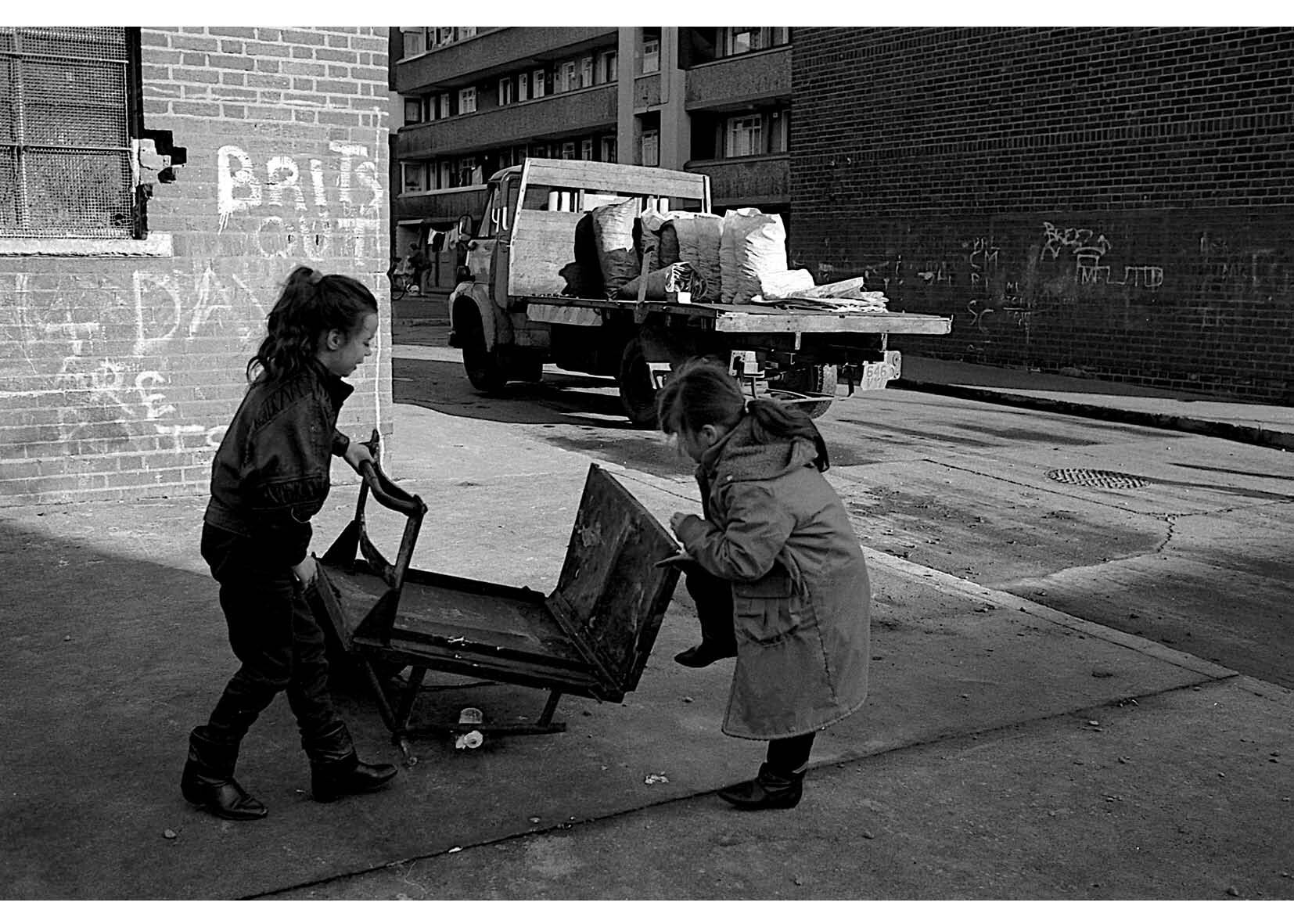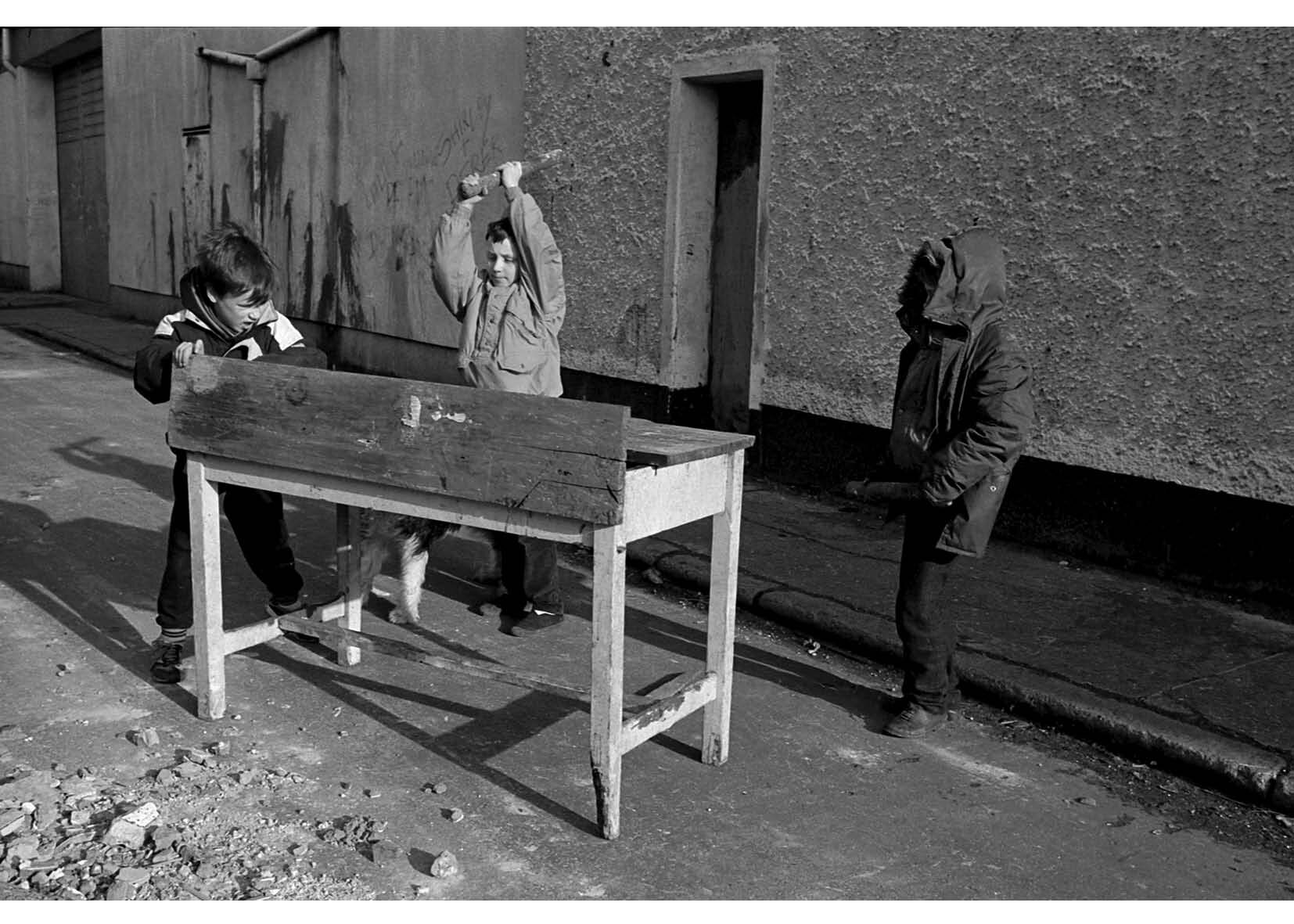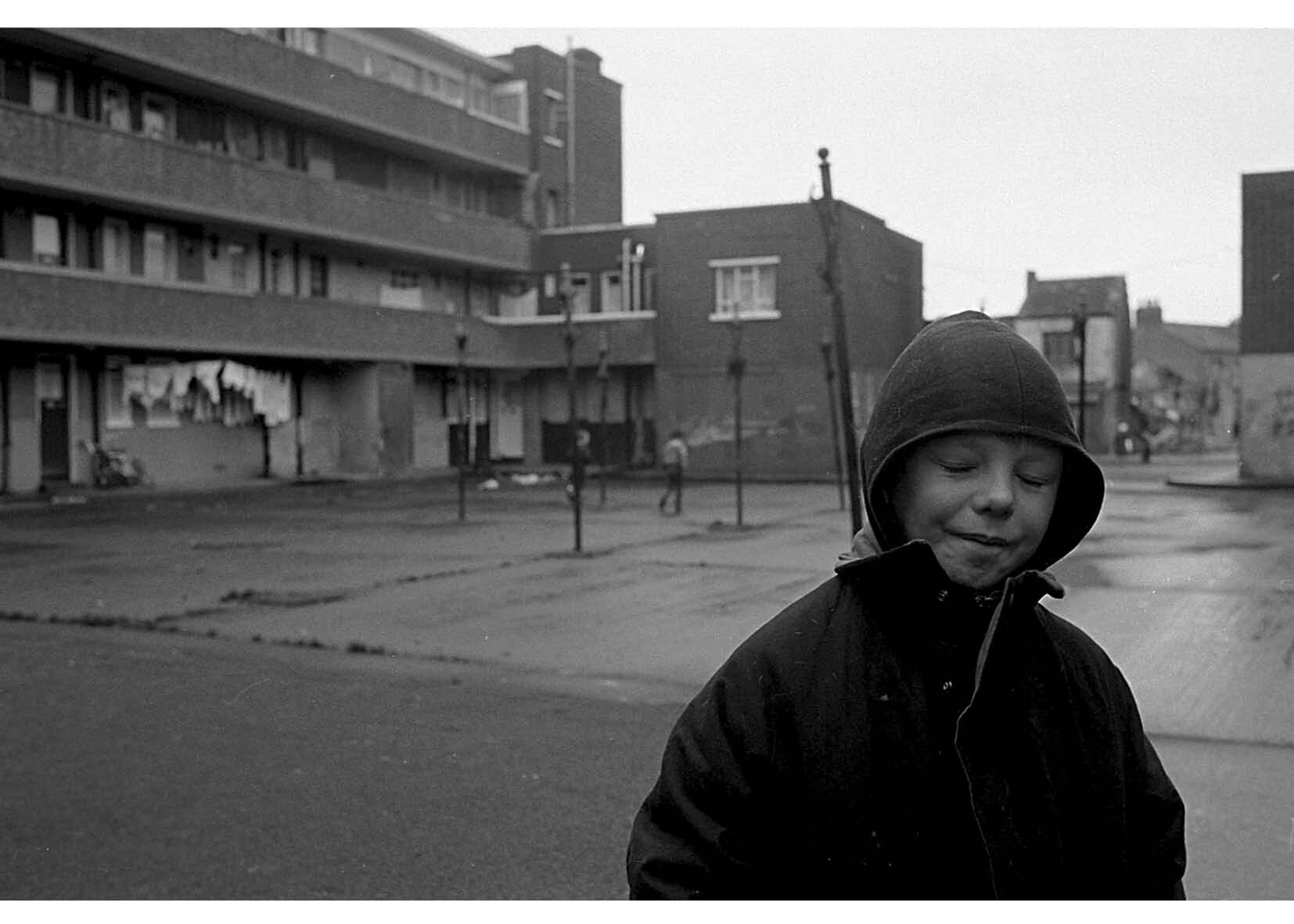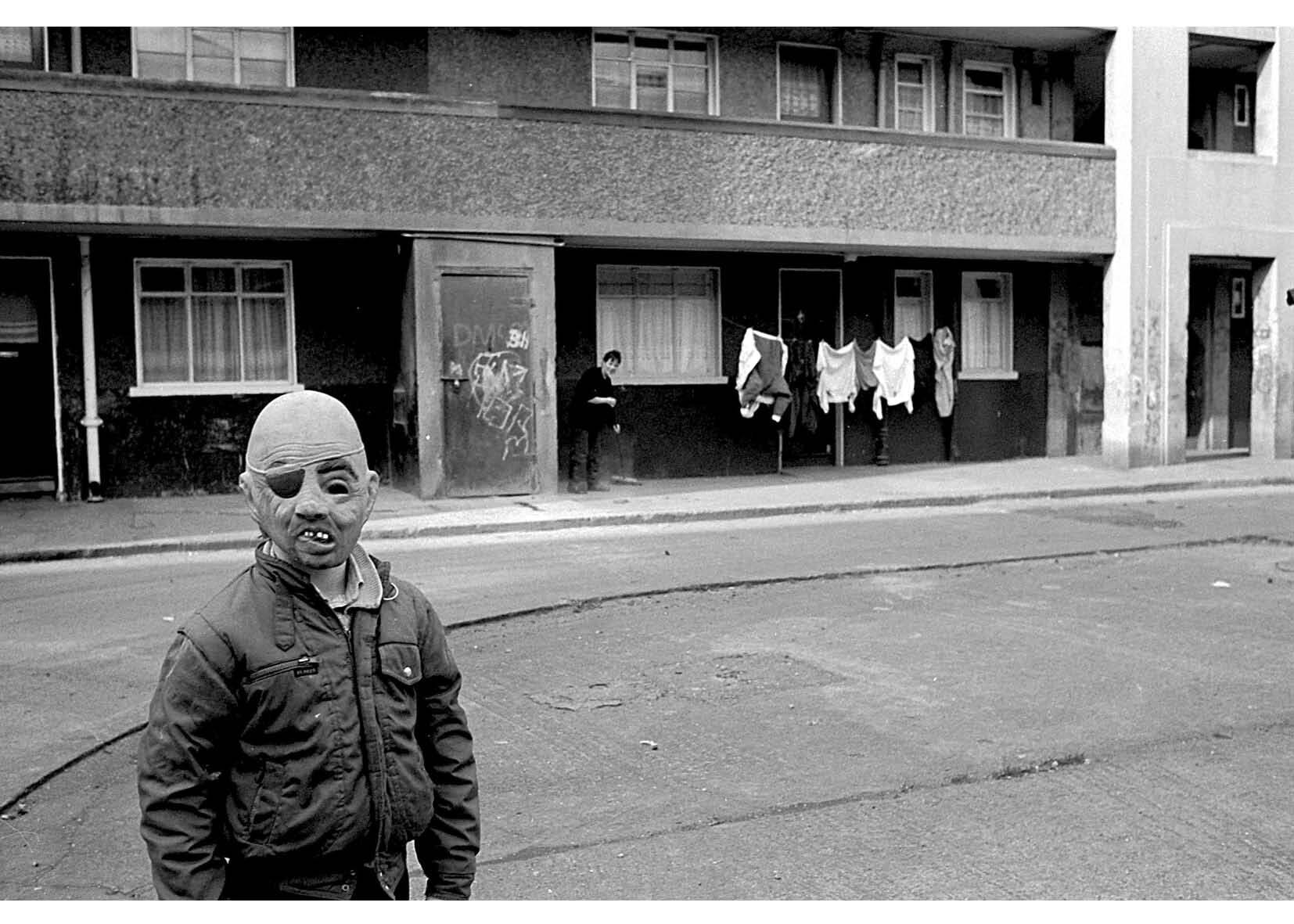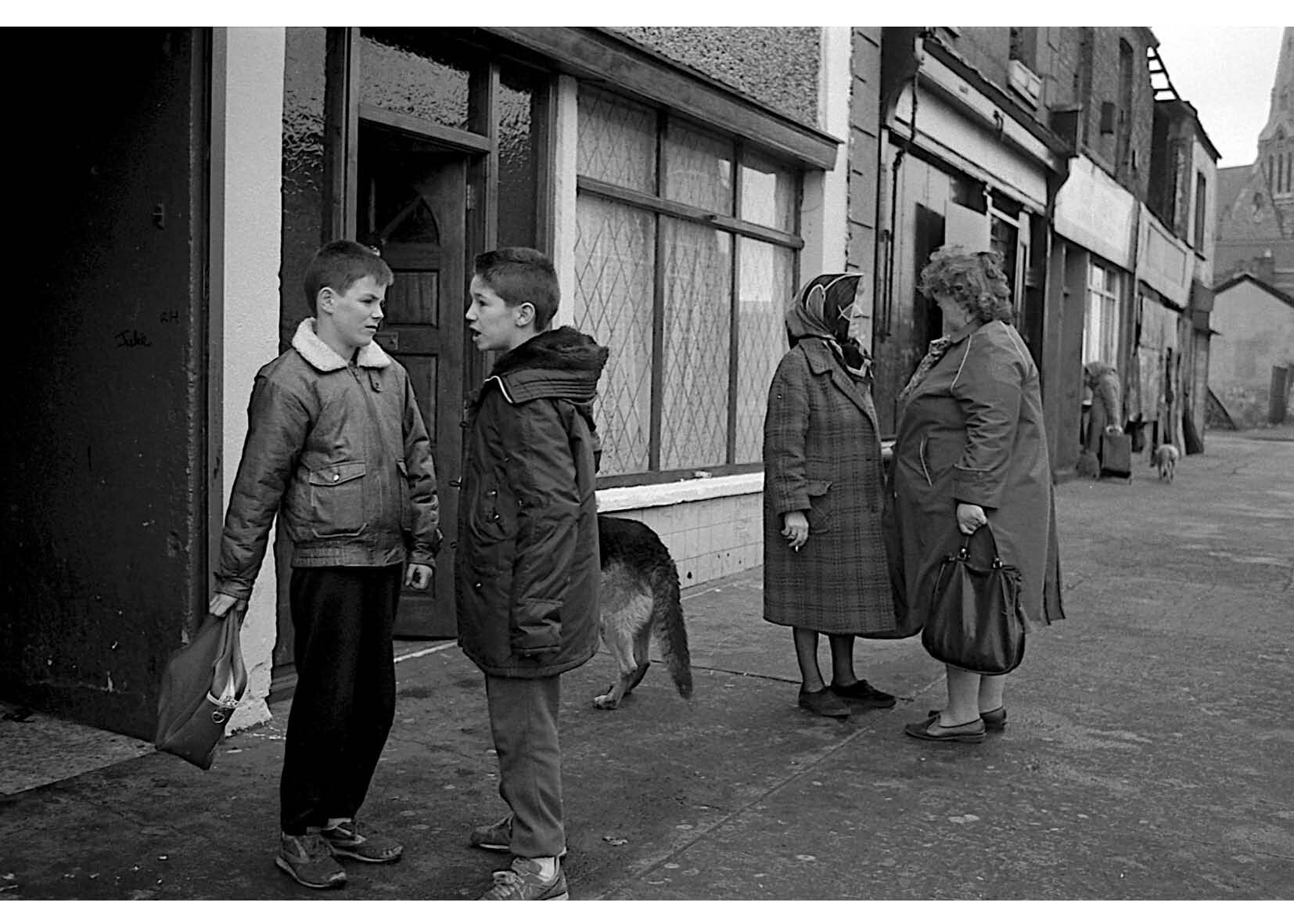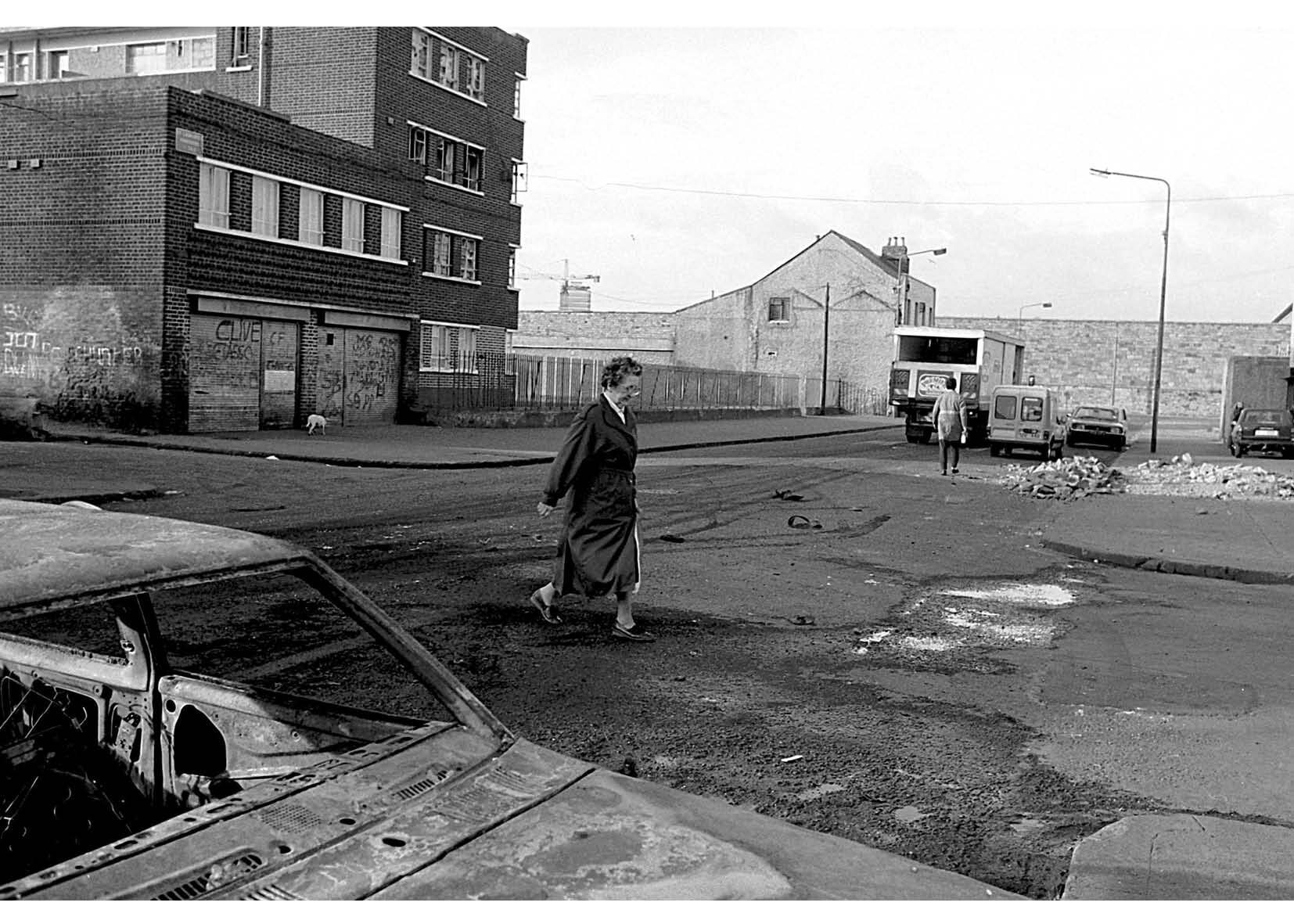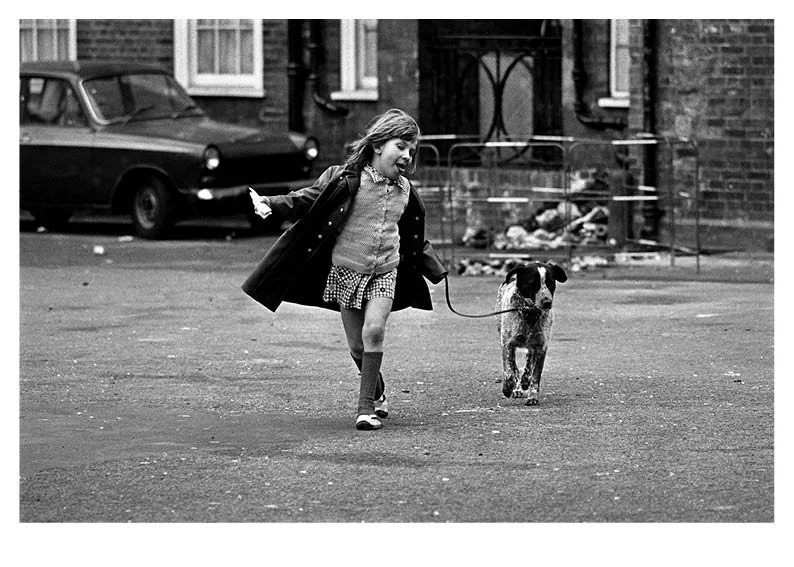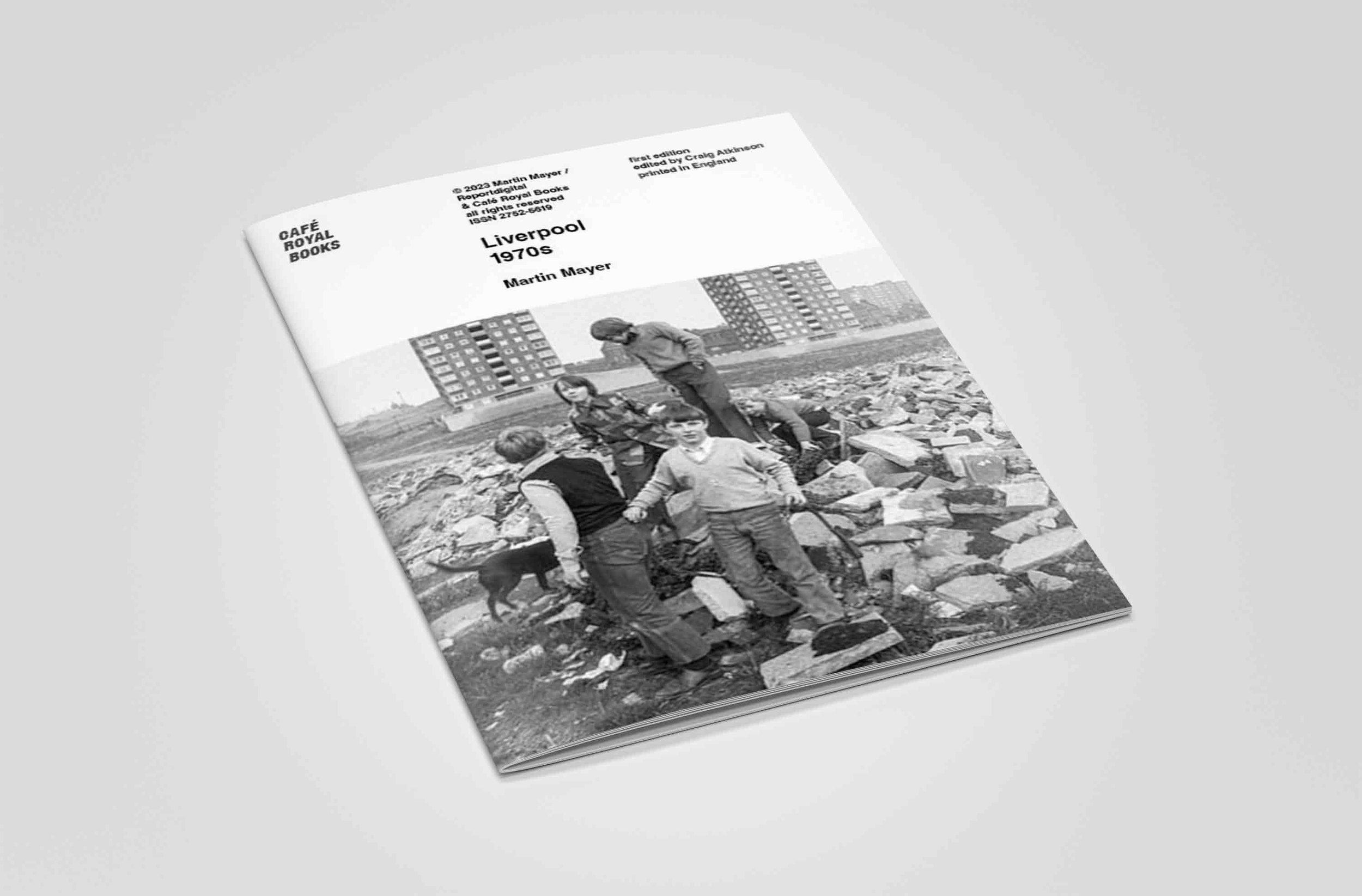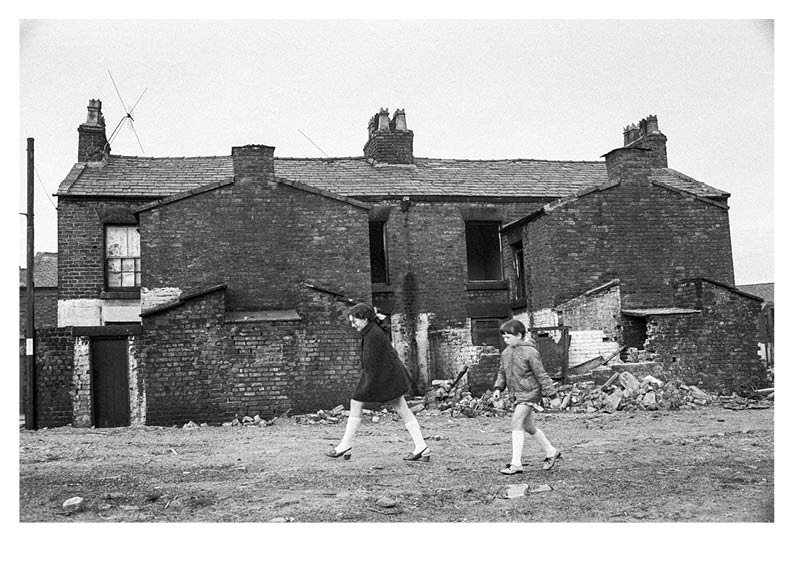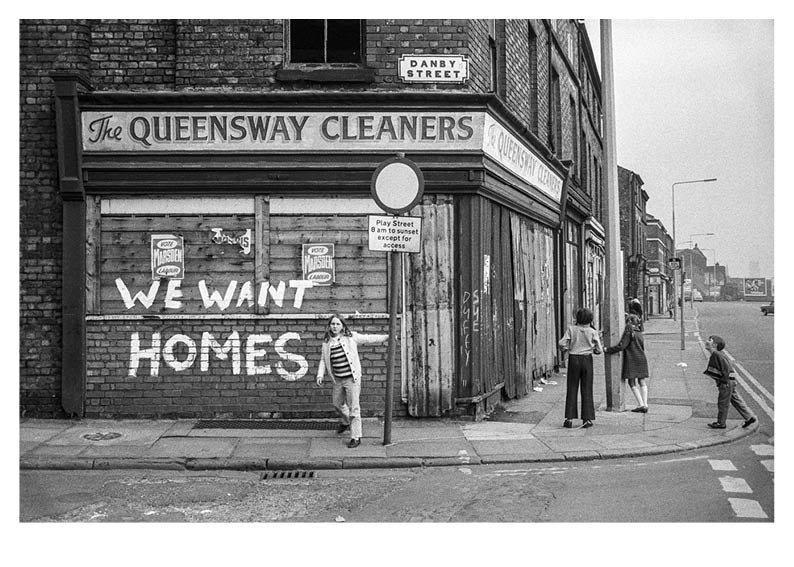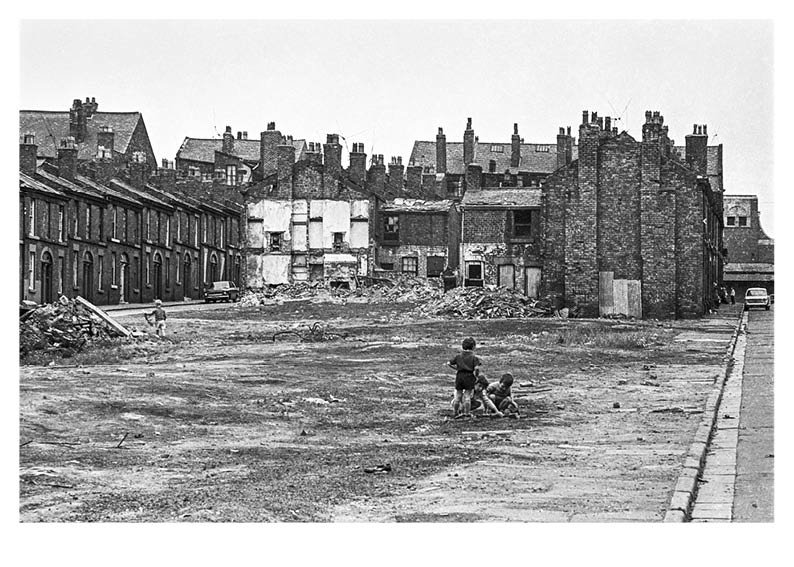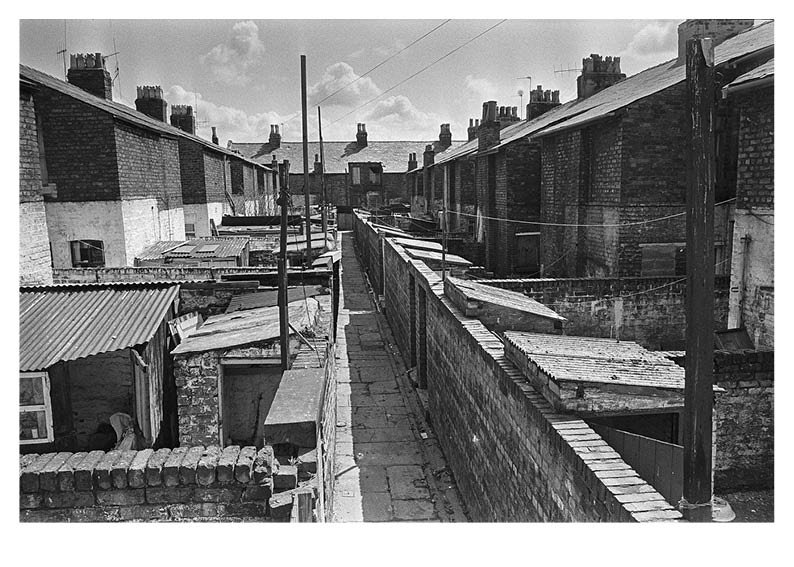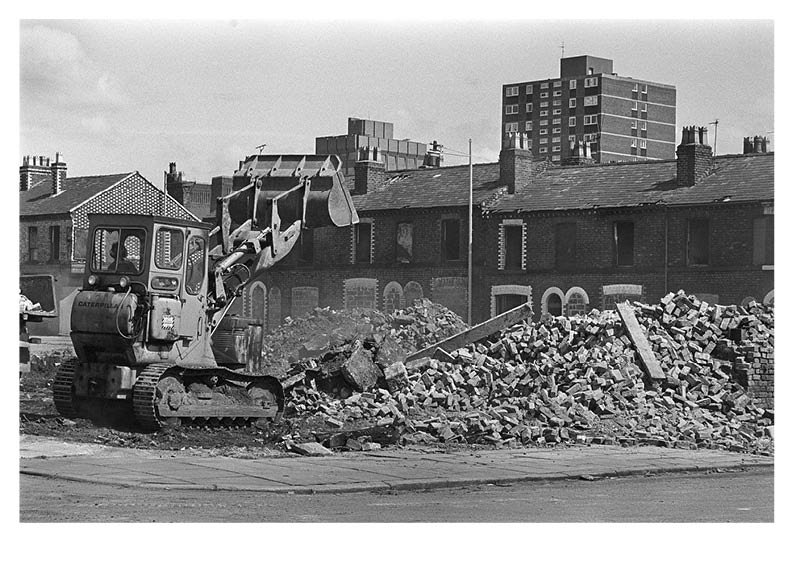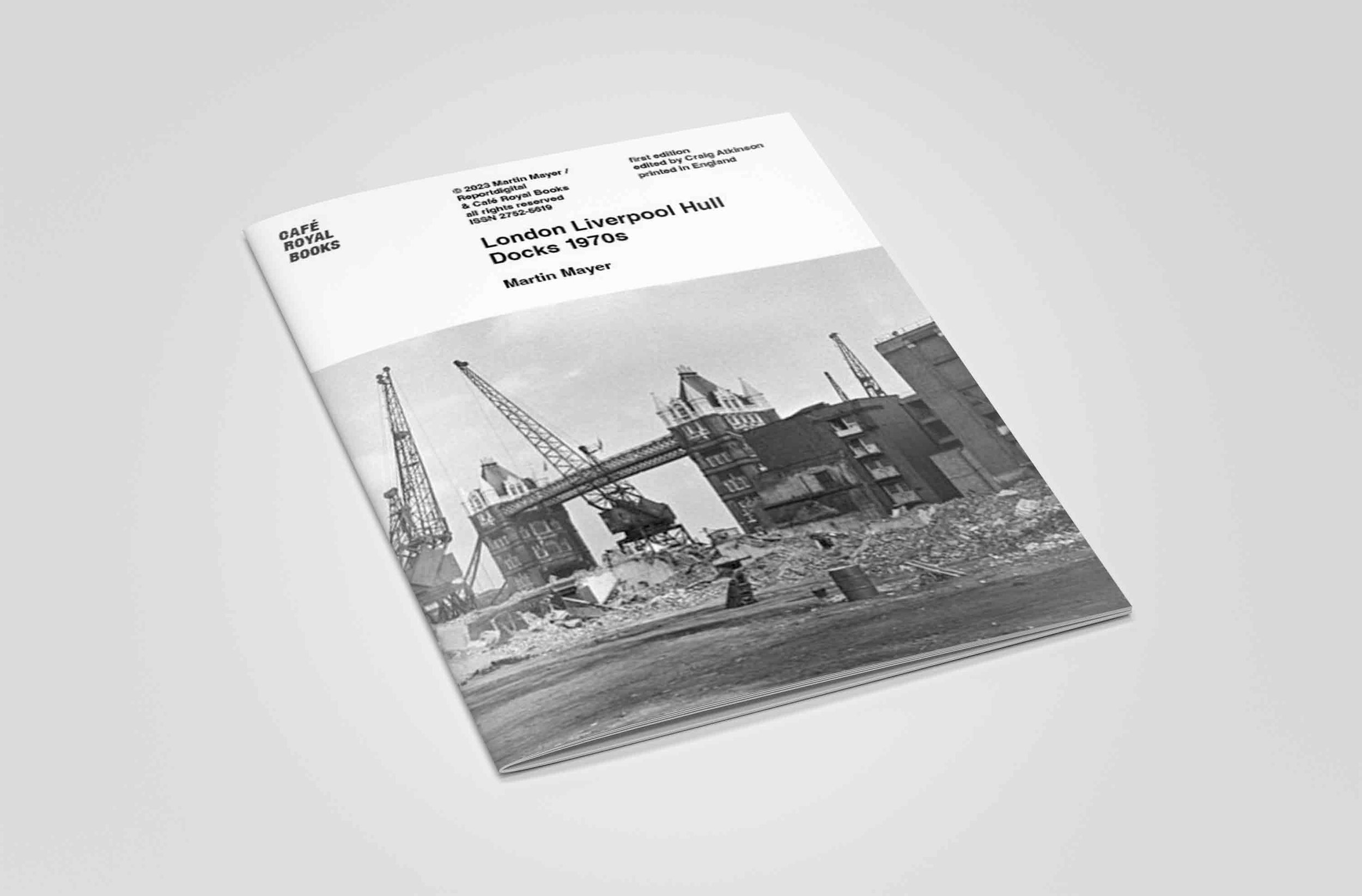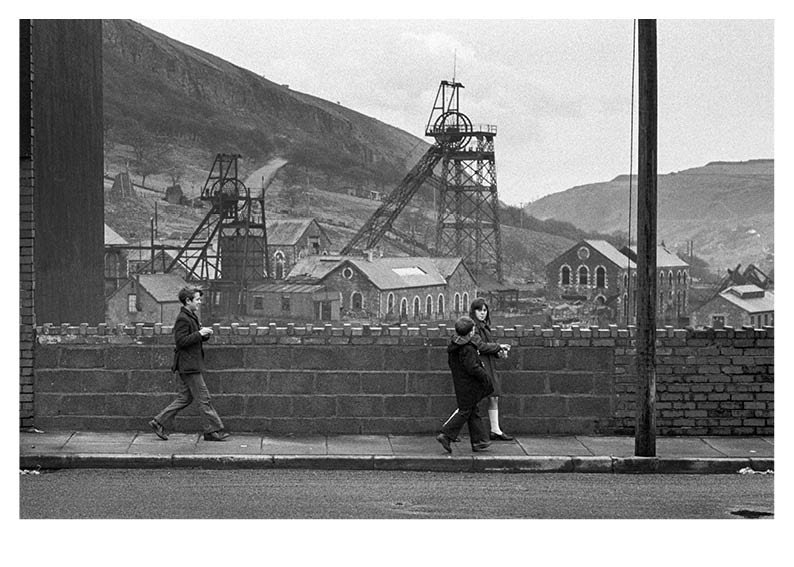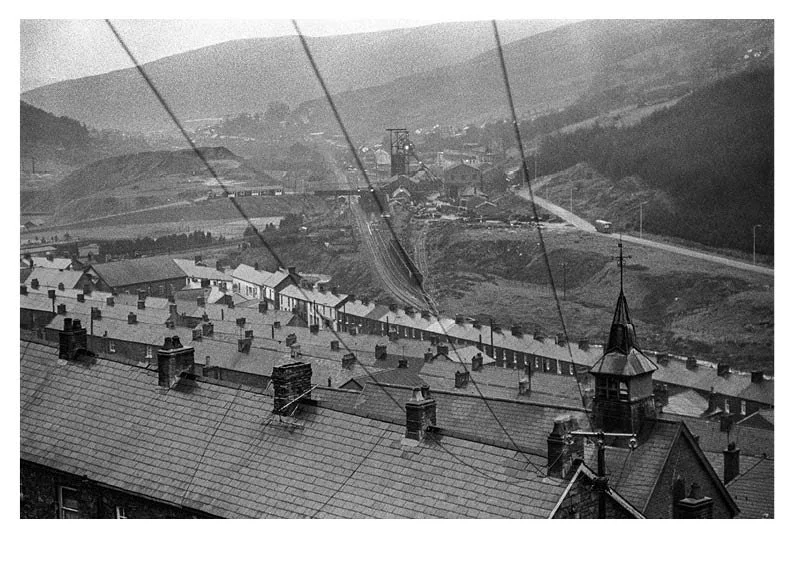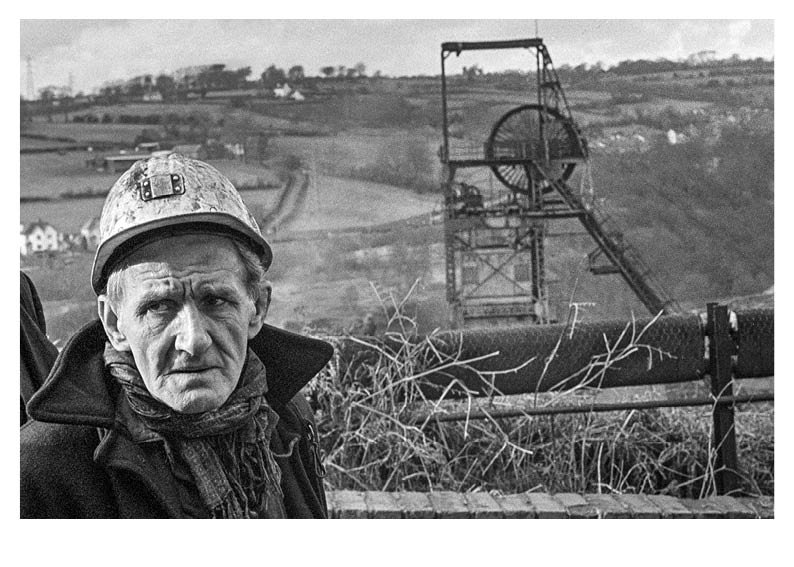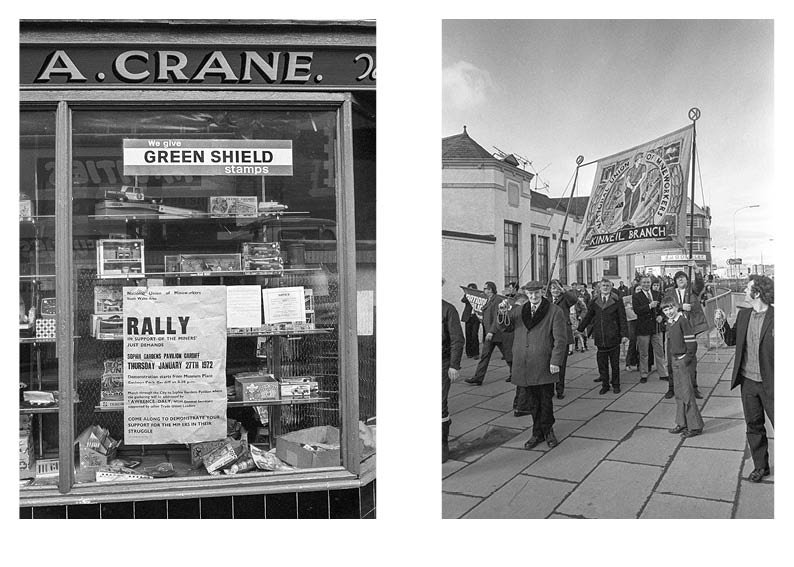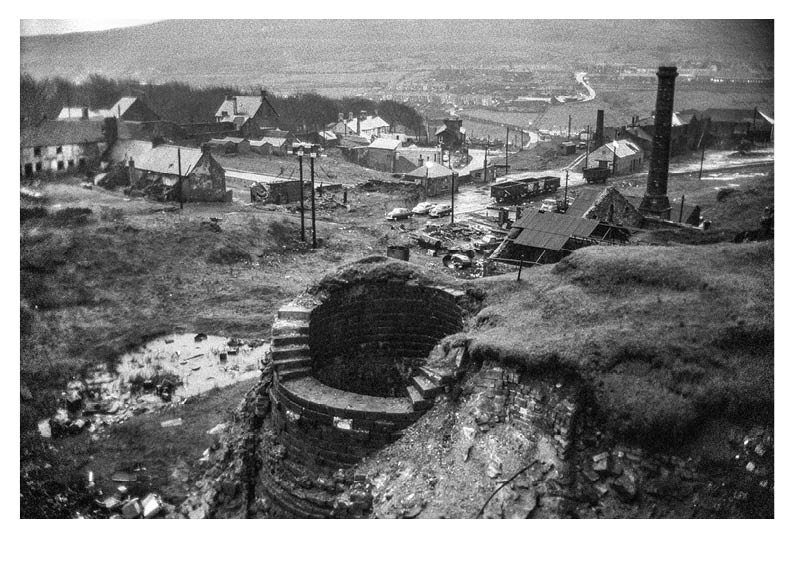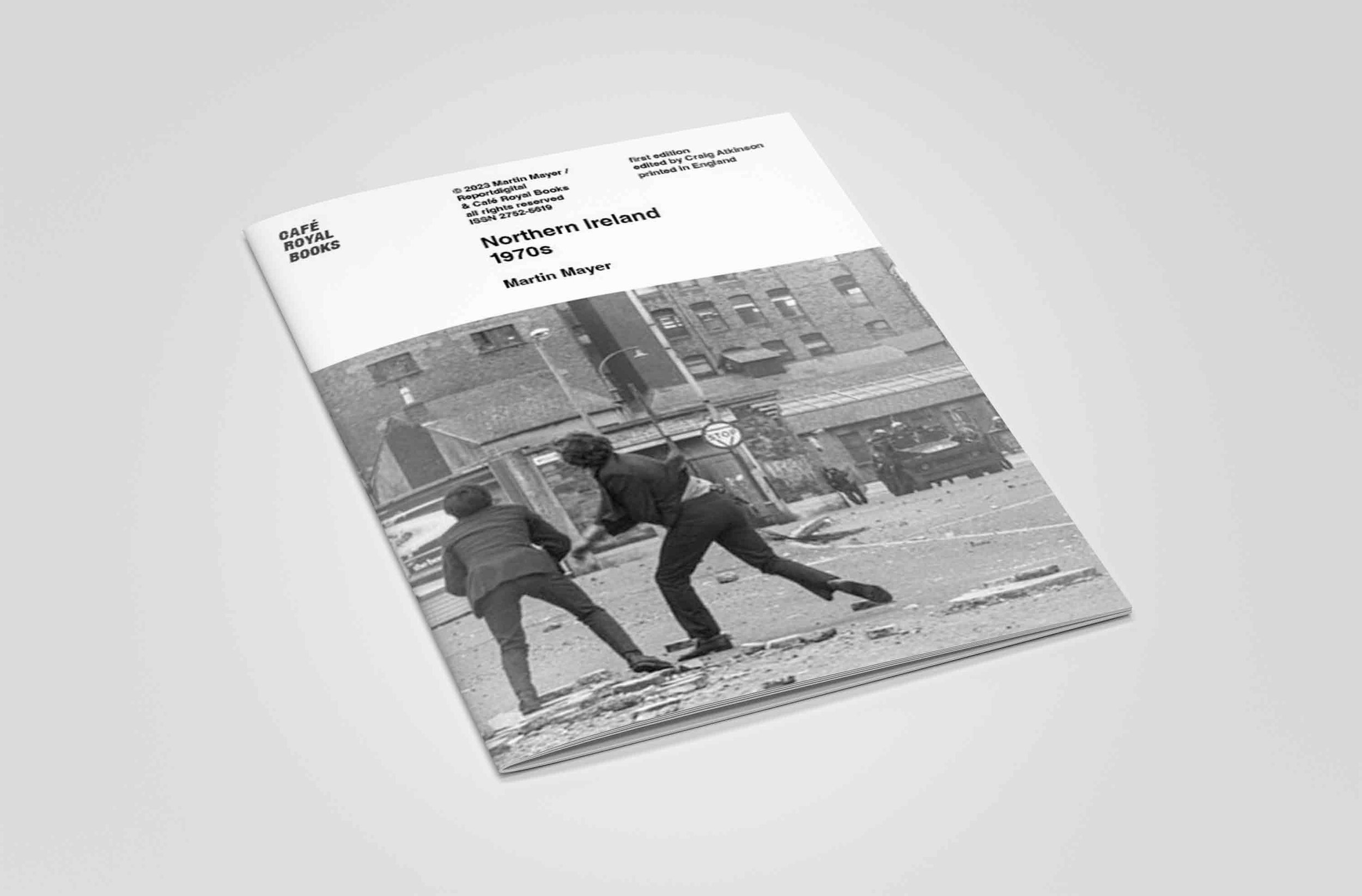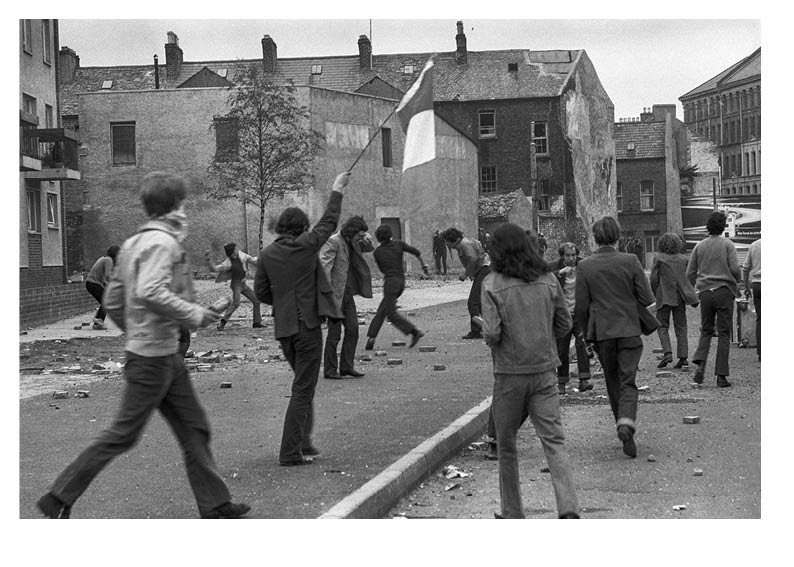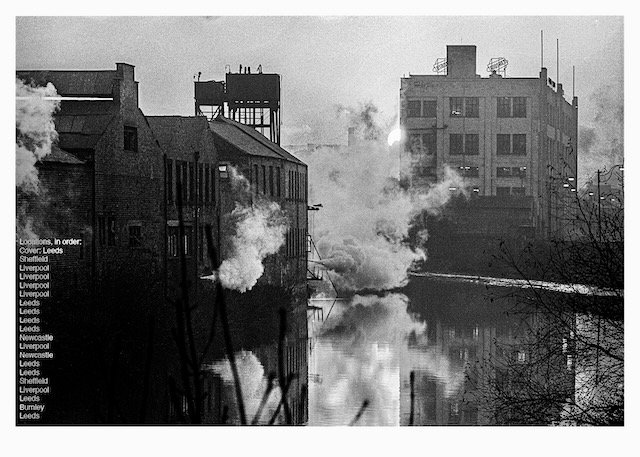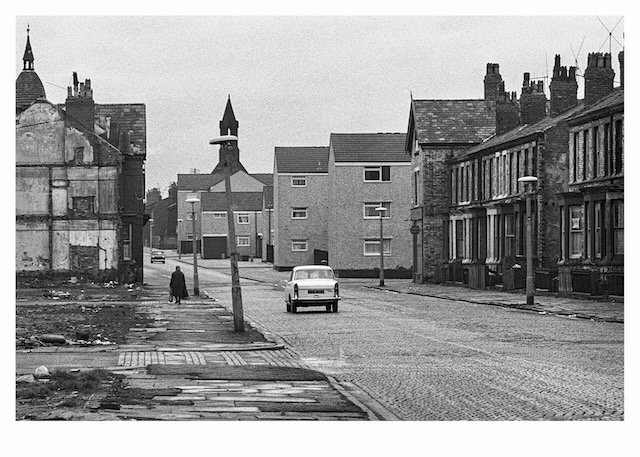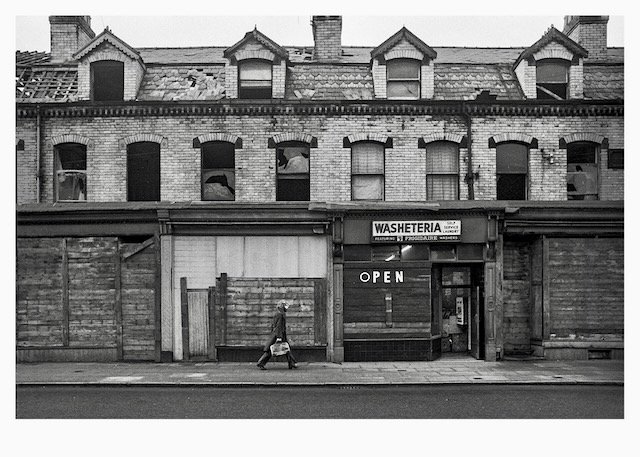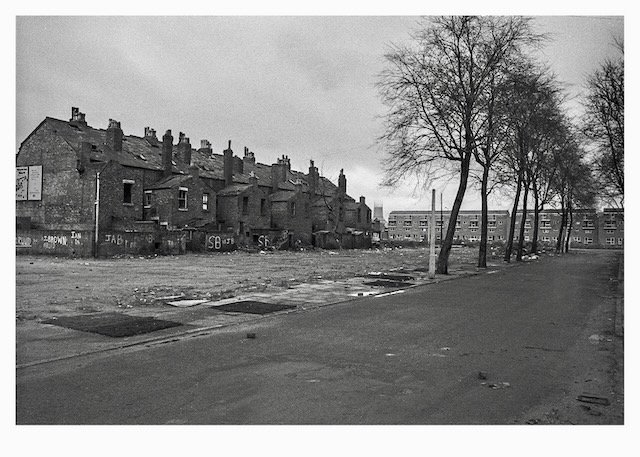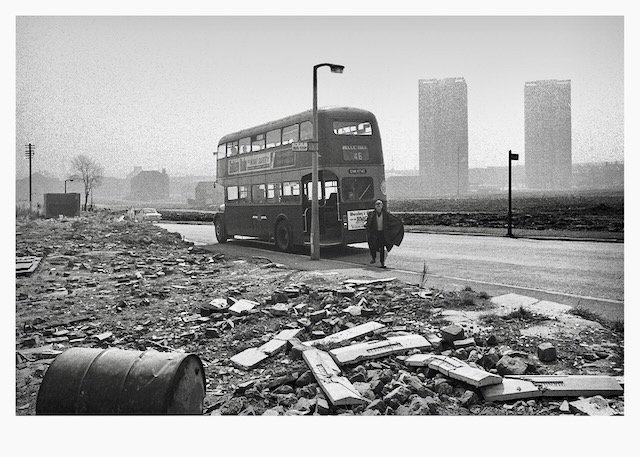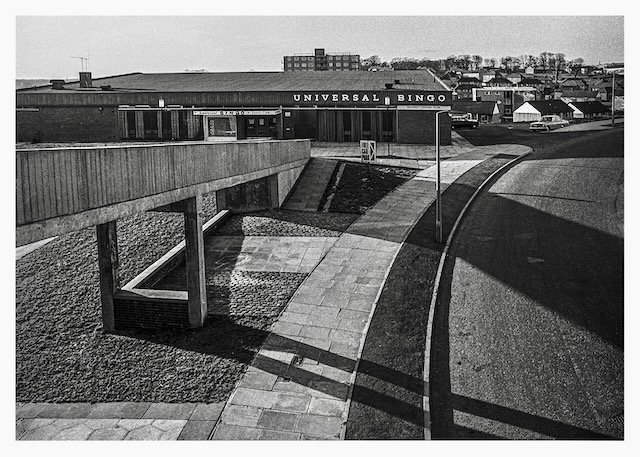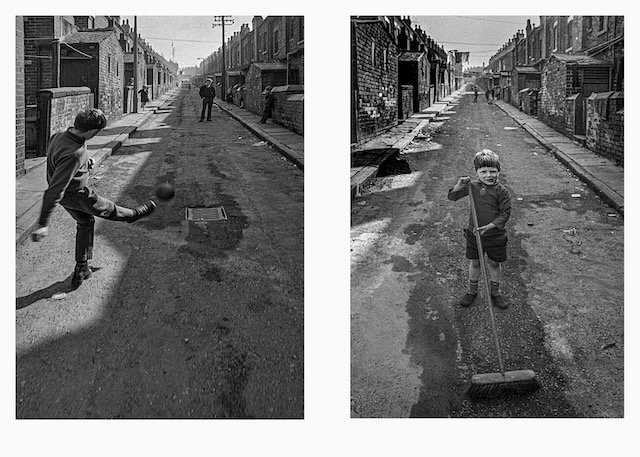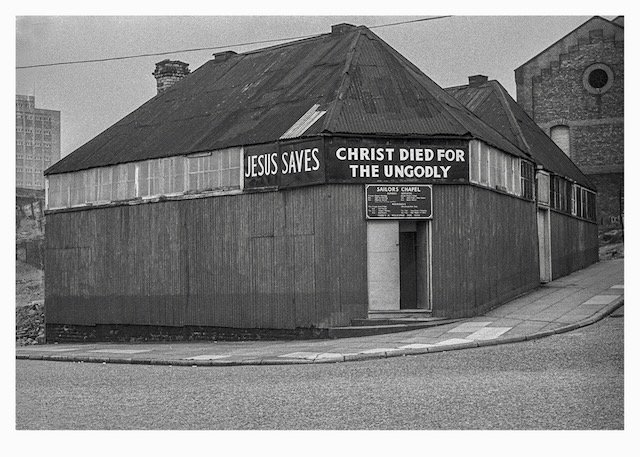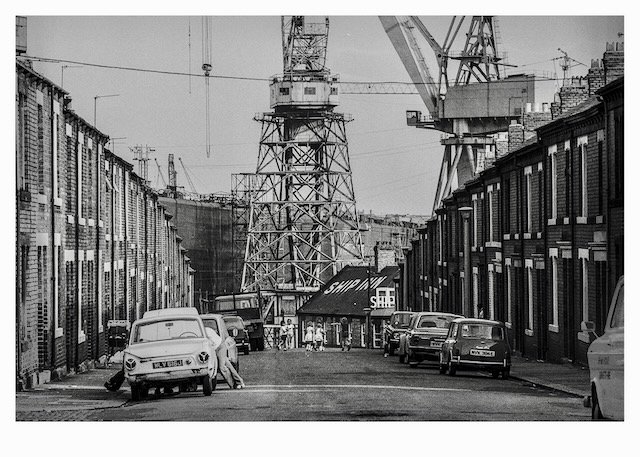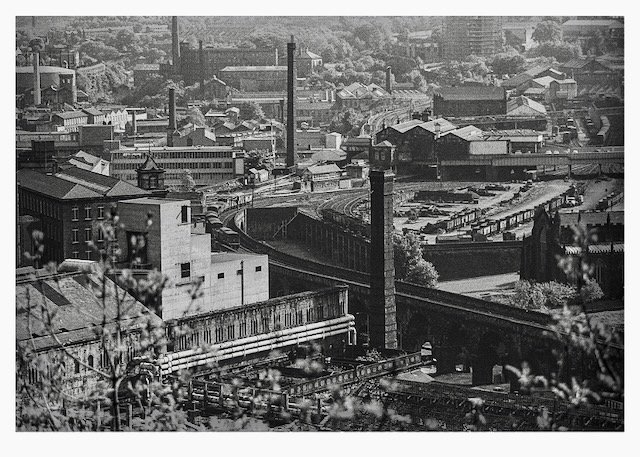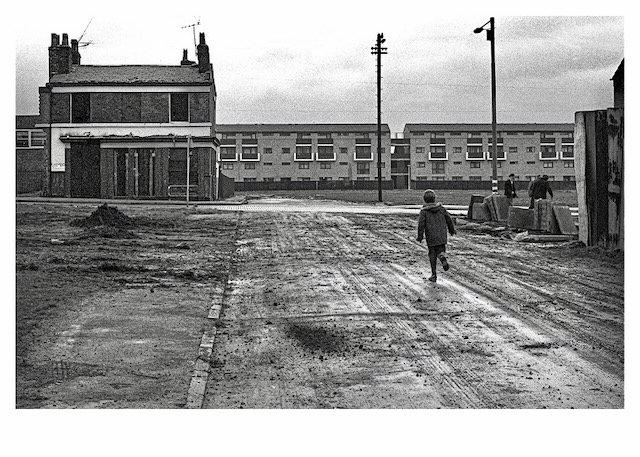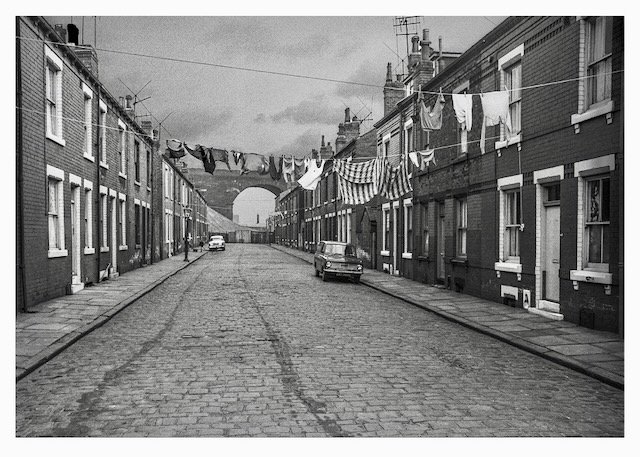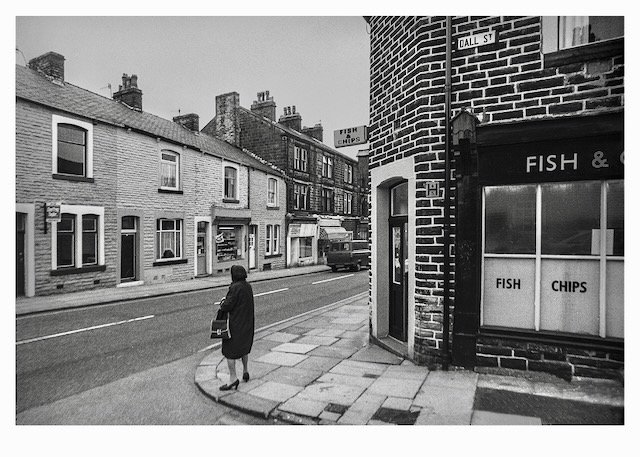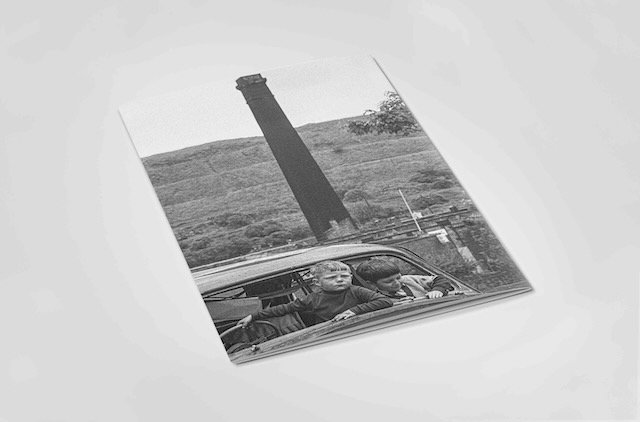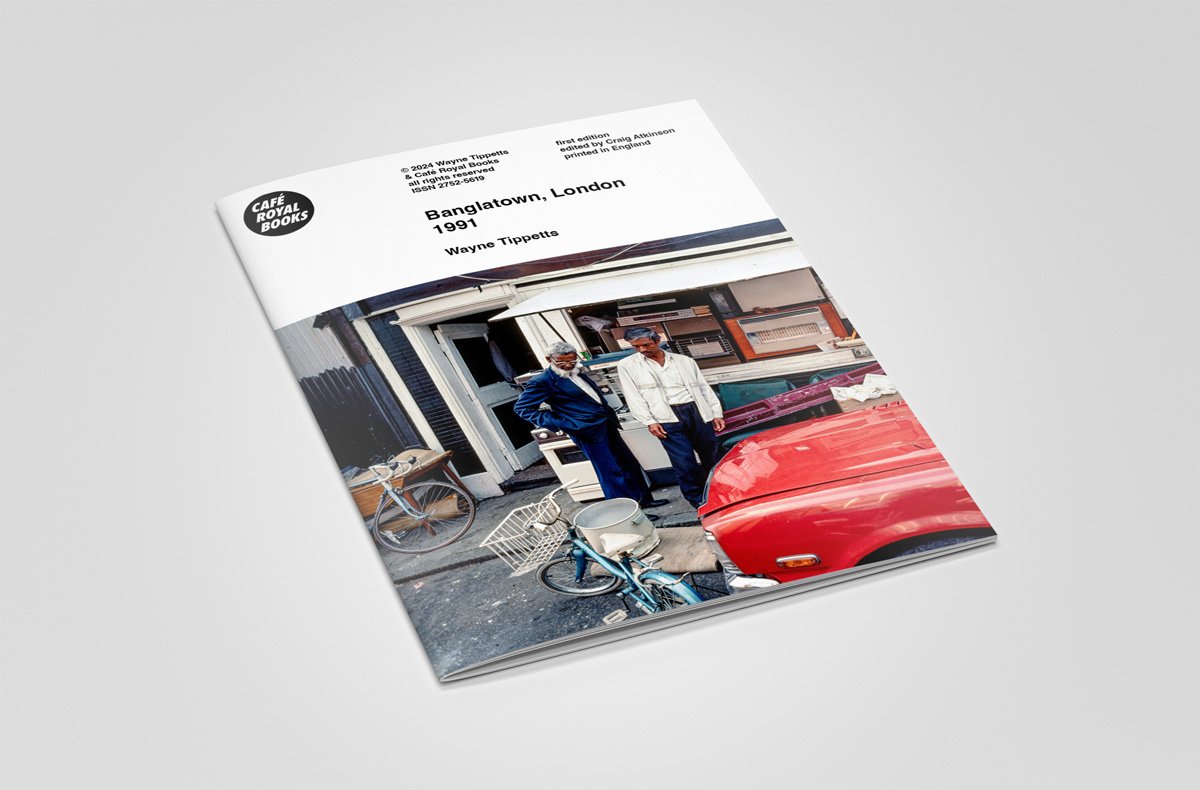 Image 1 of 19
Image 1 of 19

 Image 2 of 19
Image 2 of 19

 Image 3 of 19
Image 3 of 19

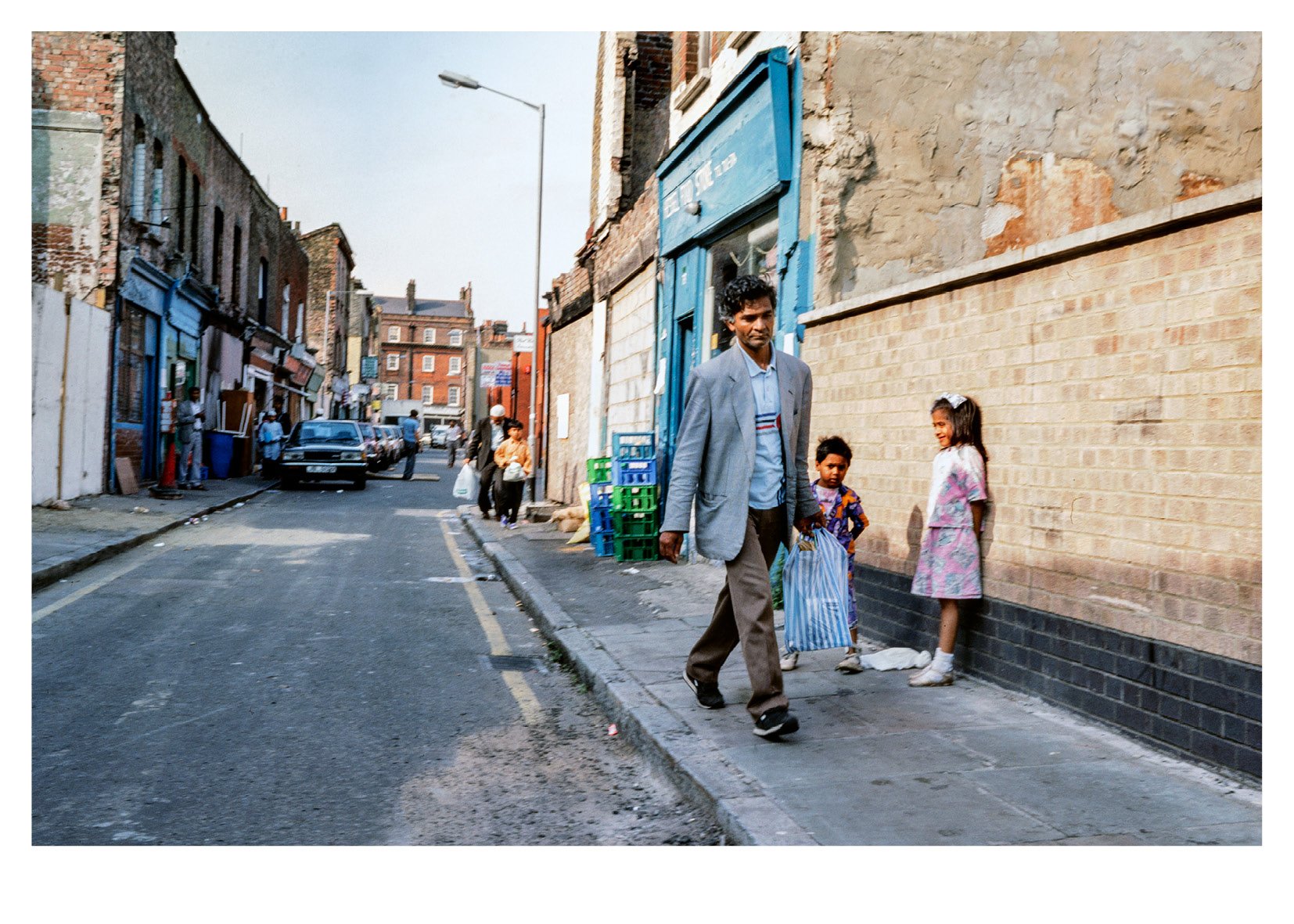 Image 4 of 19
Image 4 of 19

 Image 5 of 19
Image 5 of 19

 Image 6 of 19
Image 6 of 19

 Image 7 of 19
Image 7 of 19

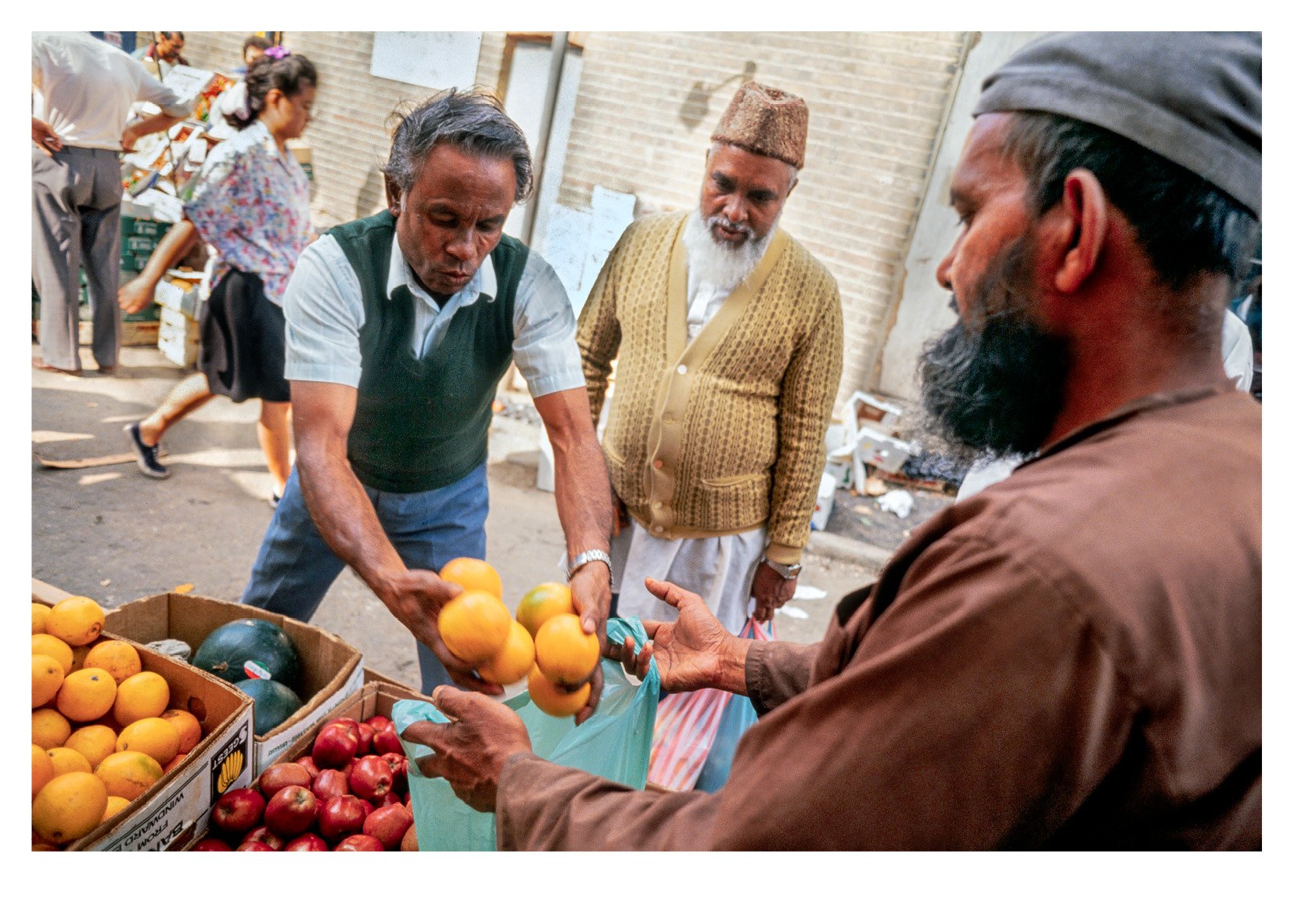 Image 8 of 19
Image 8 of 19

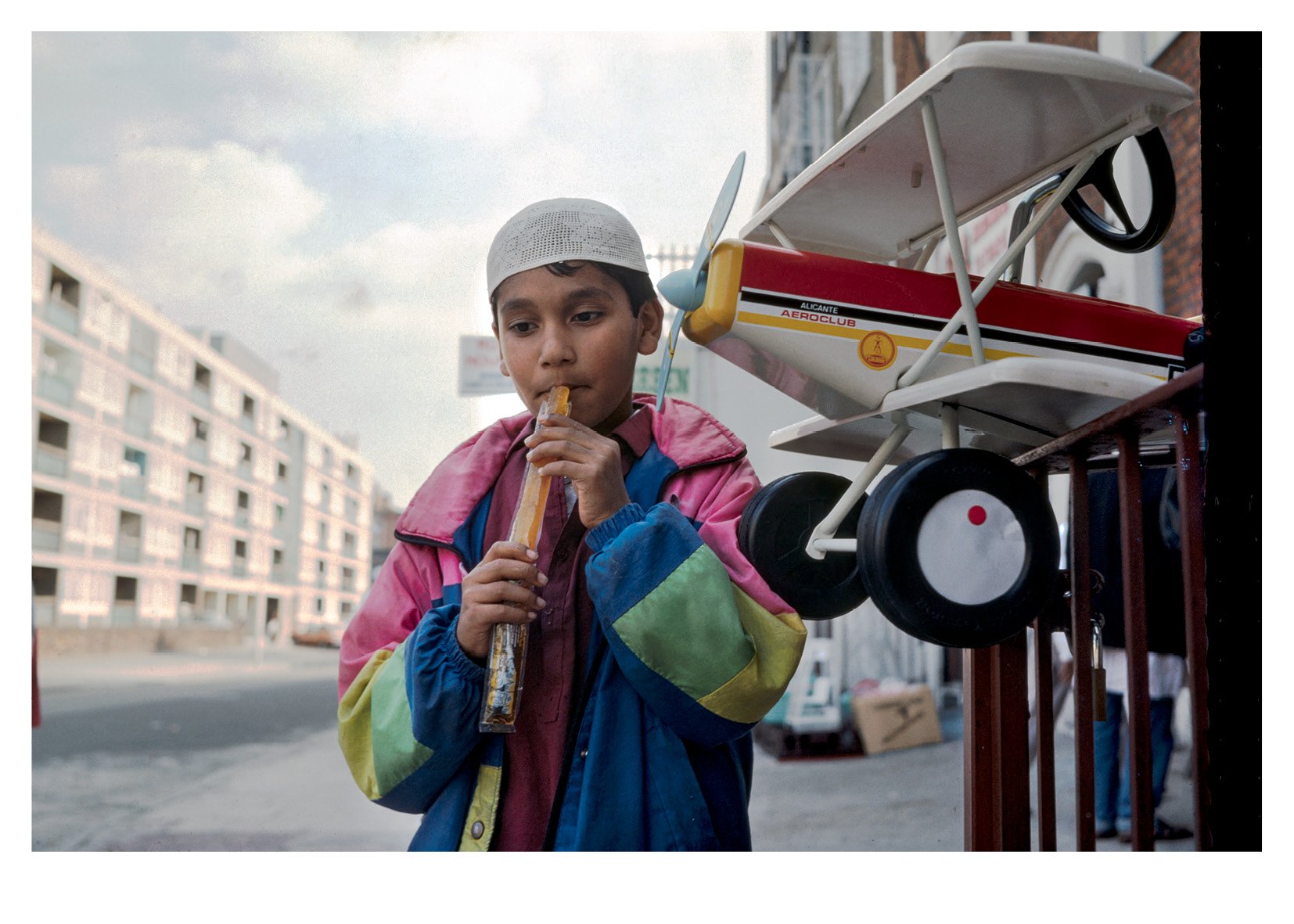 Image 9 of 19
Image 9 of 19

 Image 10 of 19
Image 10 of 19

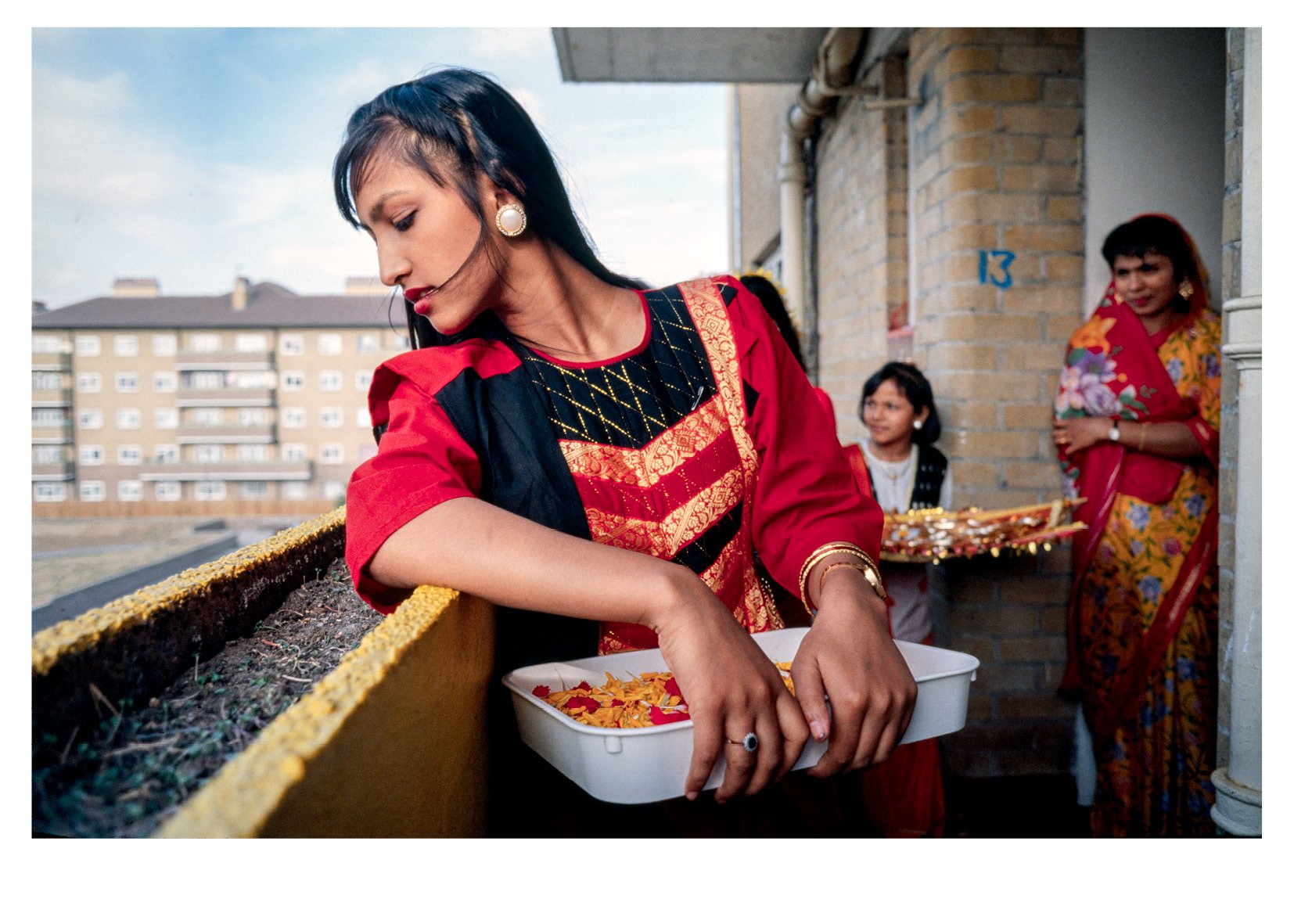 Image 11 of 19
Image 11 of 19

 Image 12 of 19
Image 12 of 19

 Image 13 of 19
Image 13 of 19

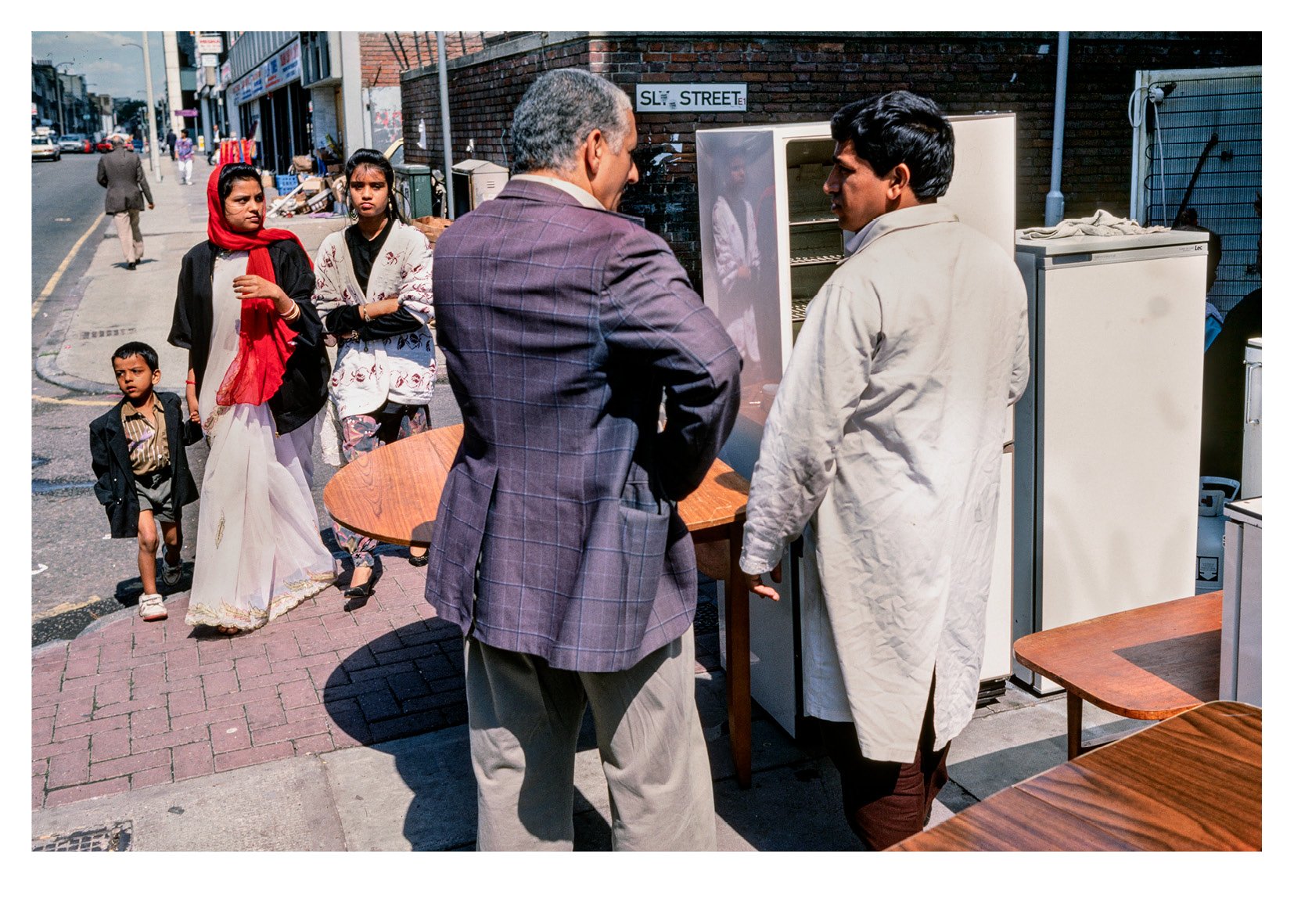 Image 14 of 19
Image 14 of 19

 Image 15 of 19
Image 15 of 19

 Image 16 of 19
Image 16 of 19

 Image 17 of 19
Image 17 of 19

 Image 18 of 19
Image 18 of 19

 Image 19 of 19
Image 19 of 19




















Wayne Tippetts — Banglatown, London 1991
36 pages
printed in England
staple bound
14cm x 20cm
Bangla Town: A Community in Transition
Over the course of three months in the summer of 1991, I would walk back and forth from my photo agency, Select, in Wapping, passing through the heart of the Bangladeshi community in the UK. This area, where Brick Lane’s southern end connects to Whitechapel High Street in the London Borough of Tower Hamlets, was officially renamed Banglatown in 1997, reflecting the substantial British Bangladeshi population that made it their home.
In 1991, this vibrant neighbourhood, shaped by migration and resilience, was alive with the sounds of daily life—children playing in the streets, bustling markets, mosques, and the emerging youth culture. The children of Bangladeshi migrants, often referred to as the “second generation,” we’re navigating a dual identity. Unlike their parents, who maintained strong ties to their homeland, they were forging a new identity as British Bangladeshis. They balanced their heritage—rooted in the Bengali language, customs, and Islam—with the multicultural influences of fashion, music, and youth subcultures flourishing in London at the time.
The photos I took in 1991 capture a pivotal moment in Bangla Town’s history—a time when the community was asserting its place in London while grappling with the challenges of urban life. Despite its vibrancy and strong cultural identity, the area also faced significant struggles, from economic hardship to racism. By this point, however, the Bangladeshi community had firmly established itself in Brick Lane and its surrounding area. Most families had their roots in Sylhet, a region in northeastern Bangladesh. Many had arrived in the UK during the 1970s, fleeing the devastation of the Bangladesh Liberation War and seeking better opportunities. For these families, Brick Lane became a hub for new arrivals, offering affordable housing and a growing support network.
Since the early 90s, the area has undergone profound changes. Gentrification has transformed Brick Lane and its environs, replacing sari shops and halal stores with artisan coffee shops, and Bengali video rental shops with boutique vintage stores and gambling slots now sit alongside Bangladeshi restaurants in Whitechapel. Along with the expansionist aims of major property developers in the area like the Truman Brewery, property prices have been driven up, forcing some families to move to other parts of London. Yet, Bangla Town’s cultural legacy endures, with the younger generation continuing to carry forward traditions of resilience and creativity.
Looking back at my brief time in Bangla Town in 1991, I hope these photos offer a small window into a neighbourhood in flux—a place where the strength of community spirit laid the groundwork for a vibrant and enduring cultural identity.
36 pages
printed in England
staple bound
14cm x 20cm
Bangla Town: A Community in Transition
Over the course of three months in the summer of 1991, I would walk back and forth from my photo agency, Select, in Wapping, passing through the heart of the Bangladeshi community in the UK. This area, where Brick Lane’s southern end connects to Whitechapel High Street in the London Borough of Tower Hamlets, was officially renamed Banglatown in 1997, reflecting the substantial British Bangladeshi population that made it their home.
In 1991, this vibrant neighbourhood, shaped by migration and resilience, was alive with the sounds of daily life—children playing in the streets, bustling markets, mosques, and the emerging youth culture. The children of Bangladeshi migrants, often referred to as the “second generation,” we’re navigating a dual identity. Unlike their parents, who maintained strong ties to their homeland, they were forging a new identity as British Bangladeshis. They balanced their heritage—rooted in the Bengali language, customs, and Islam—with the multicultural influences of fashion, music, and youth subcultures flourishing in London at the time.
The photos I took in 1991 capture a pivotal moment in Bangla Town’s history—a time when the community was asserting its place in London while grappling with the challenges of urban life. Despite its vibrancy and strong cultural identity, the area also faced significant struggles, from economic hardship to racism. By this point, however, the Bangladeshi community had firmly established itself in Brick Lane and its surrounding area. Most families had their roots in Sylhet, a region in northeastern Bangladesh. Many had arrived in the UK during the 1970s, fleeing the devastation of the Bangladesh Liberation War and seeking better opportunities. For these families, Brick Lane became a hub for new arrivals, offering affordable housing and a growing support network.
Since the early 90s, the area has undergone profound changes. Gentrification has transformed Brick Lane and its environs, replacing sari shops and halal stores with artisan coffee shops, and Bengali video rental shops with boutique vintage stores and gambling slots now sit alongside Bangladeshi restaurants in Whitechapel. Along with the expansionist aims of major property developers in the area like the Truman Brewery, property prices have been driven up, forcing some families to move to other parts of London. Yet, Bangla Town’s cultural legacy endures, with the younger generation continuing to carry forward traditions of resilience and creativity.
Looking back at my brief time in Bangla Town in 1991, I hope these photos offer a small window into a neighbourhood in flux—a place where the strength of community spirit laid the groundwork for a vibrant and enduring cultural identity.
36 pages
printed in England
staple bound
14cm x 20cm
Bangla Town: A Community in Transition
Over the course of three months in the summer of 1991, I would walk back and forth from my photo agency, Select, in Wapping, passing through the heart of the Bangladeshi community in the UK. This area, where Brick Lane’s southern end connects to Whitechapel High Street in the London Borough of Tower Hamlets, was officially renamed Banglatown in 1997, reflecting the substantial British Bangladeshi population that made it their home.
In 1991, this vibrant neighbourhood, shaped by migration and resilience, was alive with the sounds of daily life—children playing in the streets, bustling markets, mosques, and the emerging youth culture. The children of Bangladeshi migrants, often referred to as the “second generation,” we’re navigating a dual identity. Unlike their parents, who maintained strong ties to their homeland, they were forging a new identity as British Bangladeshis. They balanced their heritage—rooted in the Bengali language, customs, and Islam—with the multicultural influences of fashion, music, and youth subcultures flourishing in London at the time.
The photos I took in 1991 capture a pivotal moment in Bangla Town’s history—a time when the community was asserting its place in London while grappling with the challenges of urban life. Despite its vibrancy and strong cultural identity, the area also faced significant struggles, from economic hardship to racism. By this point, however, the Bangladeshi community had firmly established itself in Brick Lane and its surrounding area. Most families had their roots in Sylhet, a region in northeastern Bangladesh. Many had arrived in the UK during the 1970s, fleeing the devastation of the Bangladesh Liberation War and seeking better opportunities. For these families, Brick Lane became a hub for new arrivals, offering affordable housing and a growing support network.
Since the early 90s, the area has undergone profound changes. Gentrification has transformed Brick Lane and its environs, replacing sari shops and halal stores with artisan coffee shops, and Bengali video rental shops with boutique vintage stores and gambling slots now sit alongside Bangladeshi restaurants in Whitechapel. Along with the expansionist aims of major property developers in the area like the Truman Brewery, property prices have been driven up, forcing some families to move to other parts of London. Yet, Bangla Town’s cultural legacy endures, with the younger generation continuing to carry forward traditions of resilience and creativity.
Looking back at my brief time in Bangla Town in 1991, I hope these photos offer a small window into a neighbourhood in flux—a place where the strength of community spirit laid the groundwork for a vibrant and enduring cultural identity.






